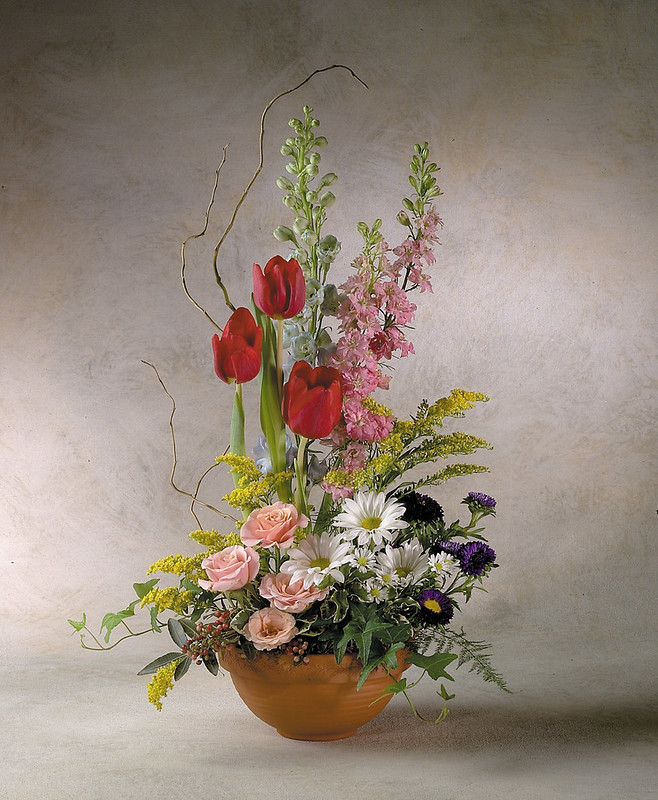Excerpt:
A flower arrangement delivers all sorts of messages, but it can also deliver plastic waste to our environment, especially when it includes floral foam.
Over a century ago, flower retailer Florists’ Telegraph Delivery group—more recognized as FTD—started the campaign “Say it with flowers” for Mother’s Day. And we’ve been saying it—I love you, I miss you, I’m thinking of you, I’m sorry, or congratulations on your new baby/home/job—ever since. Flower person or not, chances are you’ve recently intersected with a bouquet or arrangement—at a bank or hotel, at a wedding or graduation, on a table at a café. Look closely, and you’ll see the power of flowers; their ubiquity in our day-to-day.
And, honestly, what’s not to love? Flowers are beautiful, they’re natural, they lift our spirits and fill interior spaces with color and scent. They let us say things without having to say too much, and they even have their own language—a yellow chrysanthemum for slighted love, a purple hyacinth for sorrow, a scarlet geranium for stupidity according to the Victorian-era The Language of Flowers. But it turns out—at least when it comes to the way we’re currently growing, buying, and designing with flowers—the secret language of flowers might be hypocrisy. There’s a virtuous halo around flowers that causes us to gloss over the very real costs of getting them out of the soil and into the vase.
Consider the red rose, more than 250 million of which will soon be landing in the arms of Americans for Valentine’s Day. Depending on where they’re grown and purchased, those long-stemmed roses—flower code: love—could also come with the carbon footprint of a heated greenhouse and refrigerated air and road miles, and residues of pesticides and fertilizers, all bound in a non-recyclable plastic sheath.
As with the ethical questions around food and fashion, there’s a growing reckoning around the true environmental and social costs of flowers. Inspired by the slow food movement—with its vision for a world in which all people can access food that is good for them, for the growers, and for the planet—Seattle, Washington–based garden writer Debra Prinzing released the book Slow Flowers in 2013, making the case for seasonal and local flora. Through her magazine writing, she’d been meeting flower farmers and the florists who were designing with locally sourced botanicals…









